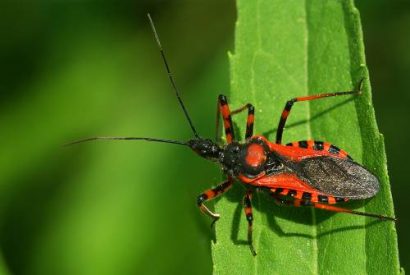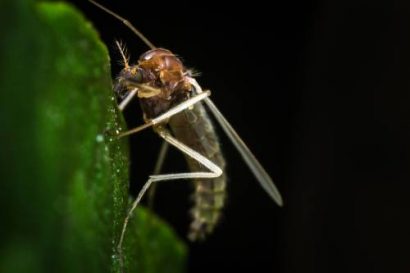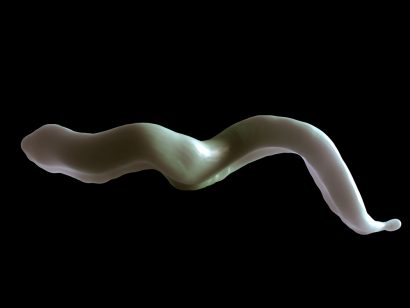Killing three deadly diseases with one compound
Posted: 9 August 2016 | Niamh Louise Marriott, Digital Content Producer | 1 comment
Three diseases; Chagas disease, leishmaniasis and sleeping sickness, all caused by parasites called ‘kinetoplastids, all sharing similar biology and genetics, leading scientists to investigate the possibility of a single chemical to destroy all three…


Scientists have identified a compound that can kill the parasites responsible for three neglected diseases; Chagas disease, leishmaniasis and sleeping sickness.
A new study suggests that a single class of drugs could be used to treat all three. Wellcome-funded researchers at the Genomics Institute of the Novartis Research Foundation (GNF) have identified a chemical compound, GNF6702, that can cure all of these diseases in mice. It also does not harm human cells in laboratory tests, providing a strong starting point for drug development.
The three diseases are all caused by parasites called ‘kinetoplastids’ – a type of single-celled organism. The parasites share similar biology and genetics, which prompted scientists to investigate the possibility of a single chemical to destroy all three.
Chagas disease (American trypanosomiasis)
Chagas disease, known as the “kissing bug”, presents itself in 2 phases; the initial, acute phase lasts about 2 months after infection, during which time a high number of parasites circulate in the blood but the symptoms remain absent or mild. Typically the first visible signs are skin lesions and swelling eyelids.
During the chronic phase, the parasites are hidden mainly in the heart and digestive muscles, with up to 30% of patients suffering from cardiac disorders and 10% from digestive (typically enlargement of the oesophagus or colon), neurological or mixed alterations. The infection can lead to sudden death via heart failure.


The assassin bug responsible for the spread of Chagas disease
- About 7 million people worldwide, mostly in Latin America, are estimated to be infected with Trypansosoma cruzi, the parasite that causes Chagas disease.
- Vector-borne transmission occurs in the Americas through diseased insects.
- Chagas disease was once entirely confined to the Region of the Americas – principally Latin America – but it has now spread to other continents.
- Trypanosoma cruzi infection is curable if treatment is initiated soon after infection.
- In the chronic phase, antiparasitic treatment can prevent or curb disease progression.
Leishmaniasis
Leishmaniasis is caused by parasitic protozoa of the genus Leishmania. Humans are infected via the bite of phlebotomine sandflies, which breed in forest areas, caves, or the burrows of small rodents.


A phlebotomine sandfly
- In cutaneous forms, skin ulcers usually form on exposed areas, such as the face, arms and legs. These usually heal within a few months, leaving scars.
- Diffuse cutaneous leishmaniasis produces disseminated and chronic skin lesions resembling those of lepromatous leprosy. It is difficult to treat.
- In mucocutaneous forms, the lesions can partially or totally destroy the mucous membranes of the nose, mouth and throat cavities and surrounding tissues.
- Visceral leishmaniasis, also known as kala azar, is characterized by high fever, substantial weight loss, swelling of the spleen and liver, and anaemia. If left untreated, the disease has a 100% fatality rate within two years.
Sleeping sickness (African trypanosomiasis)
Sleeping sickness is a vector-borne parasitic disease, caused by infection with protozoan parasites belonging to the genus Trypanosoma which are transmitted to humans by tsetse fly (Glossina genus) bites.


Trypanosoma brucei parasite causes sleeping sickness
- The disease threatens millions of people in 36 countries in sub-Saharan Africa.
- The people most exposed to the tsetse fly, therefore the disease, live in rural areas and depend on agriculture, fishing, animal husbandry or hunting.
- Human African trypanosomiasis takes 2 forms, depending on the parasite involved, Trypanosoma brucei gambiense accounts for more than 98% of reported cases.
- Sustained control efforts have reduced the number of new cases but diagnosis and treatment of the disease is complex and requires specifically skilled staff.
Destroying the parasites
Lead researcher Frantisek Supek, GNF said, “We found that these parasites harbour a common weakness. We hope to exploit this weakness to discover and develop a single class of drugs for all three diseases.”
Dr Stephen Caddick, Director of Innovation at Wellcome, commented, “These three diseases lead to more than 50,000 deaths annually, yet they receive relatively little funding for research and drug development. We hope that our early stage support for this research will provide a basis for the development of new treatments that could reduce suffering for millions of people in the poorest regions of the world.”
Future clinical trials
Existing treatments for the three diseases are expensive, often have side effects and are not very effective. The fact that GNF6702 does not seem to have any adverse effects in mice suggests that it might have fewer side-effects than existing drugs, although this will need to be explored in human studies.
GNF6702 is now being tested for toxicity before it can be moved in to clinical trials.
Related conditions
Chagas disease, Leishmaniasis, sleeping sickness
Related organisations
Genomics Institute of the Novartis Research Foundation (GNF), World Health Organization (WHO)



It’s a pretty giant leap forward!